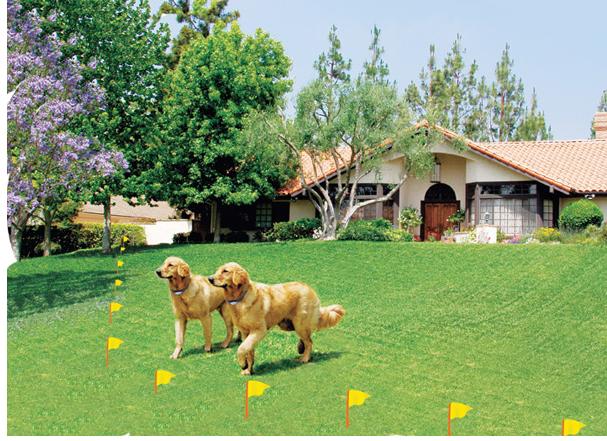Your dog needs daily time outdoors. Going outside offers mental stimulation to stave off boredom and the opportunity to exercise. A key concern, of course, is keeping your dog contained. She is far more likely to get lost, sustain an injury, ingest a toxin, encounter other risks, or cause damage for which you’re liable if she leaves your yard.
Invisible fences are a popular containment option. These use either an underground electric signal or a radio signal. The signals audibly warn your dog when she approaches her boundary and shocks her lightly if she tries to cross it.
Some people prefer a material fence. While a material fence seems more secure, it has shortcomings. Some can be jumped over or dug under, or you might forget to close and secure the gate. There’s no right answer as to which type of fence is best for you and your pet. Like everything else, invisible fences have their pros and cons.
Pros of Using an Invisible Fence
1. The invisibility itself is a positive for many homeowners. Unlike solid fences, these containment devices don’t obstruct the view of your home and yard. They also don’t close off your property; material fences often make a yard seem smaller. Plus, using hidden fences will keep your pet out of the garden or pond without blocking the garden or your pet from sight.
2. Electric and radio fences are low-maintenance. You don’t have to remember to turn them on and off, nor are they susceptible to the above-mentioned flaws of material fences. They also don’t become damaged by the elements, wayward vehicles, or rowdy kids or animals.
3. Today’s collars are durable and mostly reliable. The accessories are water-resistant or waterproof. While not all models are completely exempt from malfunctions and unprovoked shocks, collar technology has come a long way in the past 20 years and is better than ever before.
4. The shocks are harmless. That shocks are administered at all is the major point of controversy regarding invisible fences. The shocks are comparable to those we experience from static electricity.
5. They’re better than nothing. This may sound like a no-brainer, but it bears mentioning. Material fences are not always an option for one reason or another. Renting, homeowner’s association rules, or other factors may prohibit them. If you cannot erect a solid fence, an invisible fence is an alternate containment solution.
Cons of Using an Invisible Fence
1. Invisible fences are not a substitute for training; they simply reinforce it. Your dog must first be taught where her boundaries are. Using a border of small flags in conjunction with your invisible fence collar’s warning noises is a widely used method.
2. These containment systems aren’t always effective. Some dogs learn that they can rush beyond the area where they receive shocks. Others aren’t particularly bothered by the small jolts. If your dog becomes particularly excited by something beyond her boundary, her enthusiasm may overrule the negative consequence of leaving the yard.
3. Electronic and radio fences don’t keep other people and animals out of your yard. Obviously, they only contain your dog. Unlike with solid fences, children and animals can freely approach your dog, creating a risk of fights, bites, or other problems.
4. Some people consider this method of containment to be cruel. While the shocks are harmless, this is not everyone’s standard for deciding whether invisible fences are appropriate. They are distasteful to some, and certainly not for everyone.
This helpful article as provided by VetDepot.com, a trusted retailer of discount flea control including Advantix for dogs.

